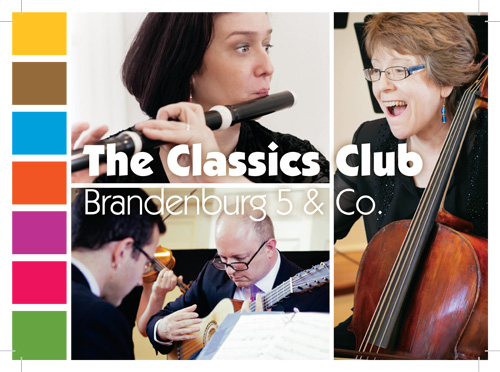
Bach’s crackling Brandenburg Concerto No 5 with soloist Adam Pearl opens Tempesta di Mare’s 2013–2014 Philadelphia Concert Series, alongside music by Vivaldi, Scarlatti, Couperin, Telemann and even the famous Pachelbel Canon, in a program called The Classics Club. Critics have praised past renditions by soloist and Tempesta harpsichordist Adam Pearl as “stellar,” with “virtuosity and daringly original tempo changes that felt fresh and right.” Performances take place on October 4 at 7:30 in Asplundh Concert Hall, Philips Memorial Building West Chester University, part of the WCU Live! series, and on Tempesta di Mare’s series on October 5 at 8:00 at the Arch Street Meeting House in Center City and on October 6 at 4:00 at the Presbyterian Church of Chestnut Hill. Tickets online or for more information: info@tempestadimare.org or 215-755-8776.
French and Italian styles were the two foreign national styles that Bach and his circle synthesized into the German “mixed style,” while German composers of Bach’s teachers’ generation had been forging a distinct German musical identity that Bach cut his teeth on.
The Classics Club frames Bach’s blockbuster with music by composers that influenced and surrounded it. French and Italian styles were the two foreign national styles that Bach and his circle synthesized into the German “mixed style,” while German composers of Bach’s teachers’ generation had been forging a distinct German musical identity that Bach cut his teeth on.
François Couperin’s Concert in the Theatrical Style, a loving tribute to his musical forerunner Jean-Baptiste Lully, brings the best of the French style to the fore. Alessandro Scarlatti’s Sinfonia 8 epitomizes the most current music coming out of Rome, sought after and emulated in Bach’s day along with the Venetian style, as exemplified in Vivaldi’s Concerto for Strings. Johann Pachelbel’s celebrated Canon typifies the sort of music that Bach’s teachers were creating and what he and his generation studied growing up. Bach-contemporary Georg Philipp Telemann’s dramatic Concerto for Flute and Violin reveals how, by sheer force of personality, an equally-gifted artist emerges with an entirely distinct musical voice when exposed to the same influences.
Click for program.
|
Program
Brandenburg Concerto No. 5 in D, BWV 1050
Johann Sebastian Bach
Concerto for Strings in D, RV 121
Antonio Vivaldi
Sinfonia No. 8 in G
Alessandro Scarlatti
8me Concert, “dans le goût théatrale”
François Couperin
Canon and Gigue
Johann Pachelbel
Concerto for Flute and Violin in E minor, TWV 43:e3
Georg Philipp Telemann
|
Click for soundclips of music by featured composers.
Bach: Brandenburg Concerto No. 5, Allegro
Couperin: 8me Concert, “dans le goût théatral,” Rondeau
Scarlatti: Sinfonia 10, Adagio; Allegrissimo
Telemann: Concerto for Flute and Violin in E minor, Allegro
